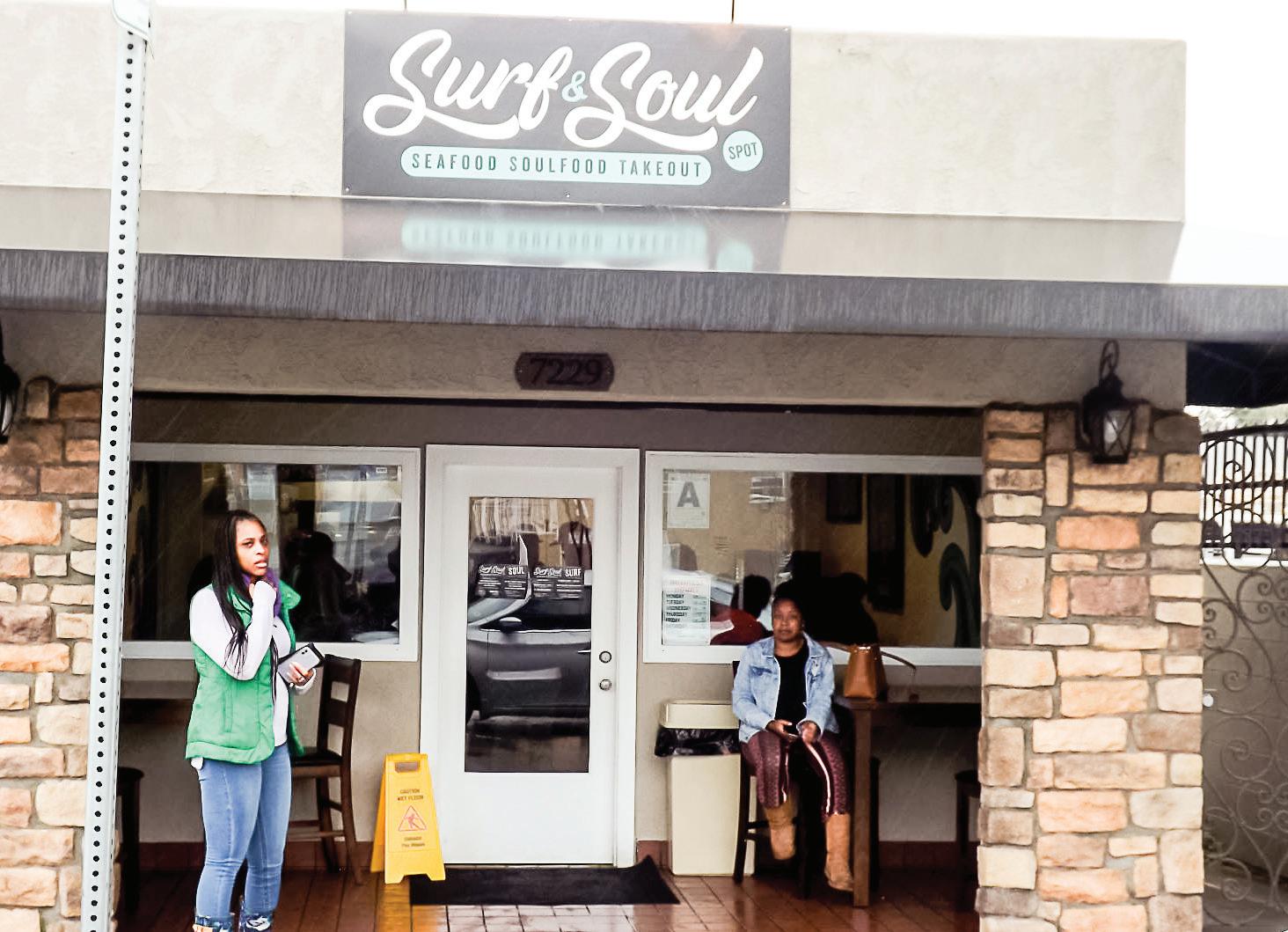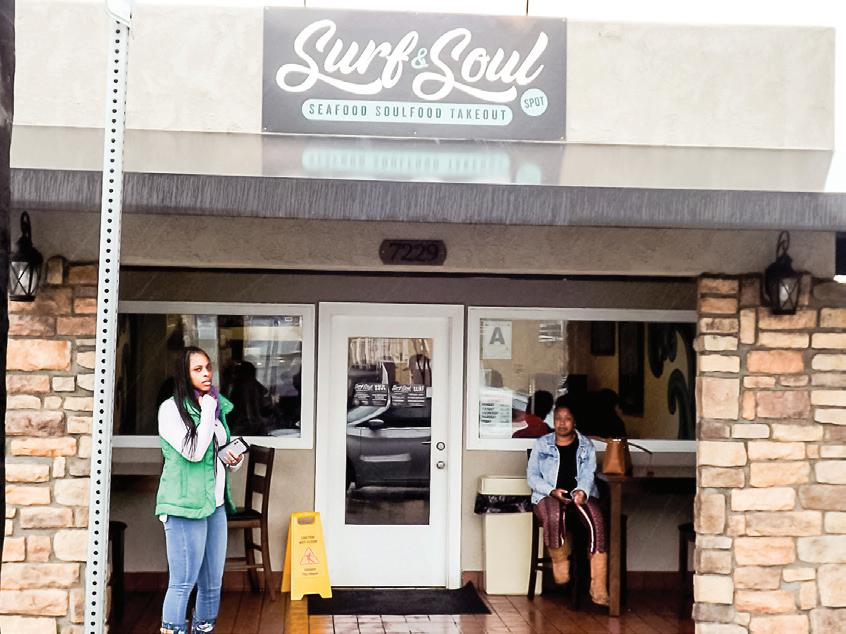
7 minute read
You Must Have Multiple Symptoms: This also is not
California Utilities Suspend Shutoffs
By Nigel Duara and Jackie Botts
Lake Tahoe, is considering a moratorium across the 14 states it serves, said Liberty western region spokesperson Alison Vai, but hadn’t made a final decision on Friday. California also has dozens of other municipally-owned electric utilities, including Pasadena, Anaheim, Riverside and Glendale. “I think it’s a good thing that the utilities realize that we are in a public health care crisis with the coronavirus pandemic. It is appropriate to make sure that people aren’t disconnected in the middle of it,” said Mark Toney, executive director of the consumer advocacy organization Utility Reform Network, based in San Francisco. “A lot of people are going to not get paid, can’t go to work, can’t collect a salary.” SoCal Edison shut off power about nine times for every 100 customers in 2016, while PG&E did so about six times per 100 customers. SDG&E’s rate was three shutoffs per 100 customers, and for SDG&E it was two, according to the Utility Reform Network report. And about 1 percent to 2 percent of Pacific Power’s customers have their power shut off during a typical year, Gaunt said. Power usage could be altered by the pandemic in unexpected ways, said Wes Jones, communications manager for San Diego Electric & Gas. People who are self-quarantining or self-isolating will likely use more power than if they went to a job. Schools are closing across the state, meaning kids could be spending more time at home, too. It all will likely add up to higher power bills for California customers. The decision to stop disconnecting customers who can’t pay bills represents a distinct change from how utilities responded to the slower-moving Great Recession, when economic disconnections nearly tripled between 2007 and 2009, according to a 2017 report from the California Public Utilities Commission, which regulates privately owned utility companies. Only after the Commission intervened in 2009 did the companies stop shutting off power to customers who were late on their bills. “I think they’re having a new relationship with their customers in acknowledging that just being Six utilities serving more than 21 million Californians have announced that they will not shut off customers’ power for non-payment as the coronavirus continues to disrupt daily life. Southern California Edison, Pacific Gas & Electric, San Diego Gas & Electric and Pacific Power are taking the step until further notice. The Los Angeles Department of Water and Power, which is the nation’s largest municipal utility, will not shut off power or water for non-paying customers until at least the end of March, and the Sacramento Municipal Utility District made the same announcement for its power customers. Utilities usually protect customers who are struggling to pay bills only during major natural disasters. “We’re trying to reduce the burdens people have,” said Pacific Power spokesman Tom Gauntt, whose company serves customers in Northern Ca lifornia, Oregon and Washington. “We do a similar thing during a big ice storm.” A seventh utility, Liberty Utilities, which serves about 50,000 electricity customers near punitive is not the answer,” said Commissioner Martha Guzman Aceves. “And that really helping their customers stay in a home with power will only help them revive economically. And that it’s in their interest to keep these customers healthy.” The Federal Communications Commission on Friday asked Internet and cable providers to hold off on non-payment shutoffs, to not charge late fees and to open wireless hotspots for no charge until May 13, 60 days after the request. Most major telecom providers have agreed, according to a memo by FCC Chairman Ajit Pai. The same day the California Broadband Council moved to “formally request that providers offer free Internet services until the end of April due to the State’s pandemic emergency,” said Alice ScottRowe, communications deputy director for the California Department of Technology. About 26 percent of California households lack a broadband subscr ipt ion at home, according to a Public Policy Institute of California analysis of 2017 survey data from the Census Bureau. Those without broadband will find it nearly impossible to telecommute to work or attend classes online as more workplaces and schools shut down, said Guzman Aceves. New York and New Jersey both announced Friday that no utility will be permitted to shut off power, heat or water during the states’ emergencies. But there is no statewide edict in California. As the coronavirus threat spreads, six California legislators have asked Gov. Gavin Newsom for a host of measures aimed at assisting low-income state residents and those facing eviction. Their letter asked for a stay on all evictions and foreclosures, along with a statewide pause on any utility shutoff and a postponement of any adversarial hearing before a housing authority for recipients of housing assistance.
SDUSD Meal Pick-Up Locations for Children
Courtesy of San Diego Unified School District
San Diego Unified Food and Nutrition Services will be conducting a drive thru/ walk-up distribution of daily grab-and-go prepared meals, free of charge. Children must be present to receive meals, and each child 18 years and younger may take one lunch and one breakfast for the next day.

-Sherman Elementary School - 301 22nd St, San Diego, CA 92102 -Zamorano Fine Arts Academy - 2655 Casey St, San Diego, CA 92139 -Kearny High School - 1954 Komet Way, San Diego, CA 92111 -Walker Elementary School - 9225 Hillery Dr, San Diego, SDUSD requires that all food is be taken and consumed offsite. Meal distribution times for all locations are Monday through Friday, 11:00 a.m. to 1:00 p.m. As of Monday, March 16, the following locations are serving meal: -Clark Middle - 4388 Thorn St, San Diego, CA 92105 -Cherokee Point Elementary - 3735 38th St, San Diego, CA 92105 CA 92126 -Farb Middle - 4880 La Cuenta Dr, San Diego, CA 92124 -O’ Farrell Charter School - 6130 Skyline Dr, San Diego, CA 92114 -Porter Elementary North - 445 S 47th St, San Diego, CA 92113

Census Day is April 1st - Are You Ready?
Voice & Viewpoint Newswire

April 1 is Census Day, a key reference date for the 2020 Census. When completing the census, you will include everyone living in your home on April 1, 2020. Census Day will be celebrated with events across the country. In mid-March, homes across San Diego County began receiving invitations to complete the 2020 Census. You can respond from the comfort of your home in one of three ways: online, by phone, or by mail. Want to complete the Census online? Go to my2020census.gov. Have questions? Call this toll-free number: 844-330-2020. “The 2020 Census is finally here,” Secretary of State Alex Padilla said. “Californians should keep an eye on their mailboxes for their official invite to participate in the Census. In 2020, we need every Californian to be counted. Your responses to the census will impact your family and your community’s access to services for the next decade. Funding for public health, public safety, education, and infrastructure depend on everyone in California—from the youngest to the oldest— being counted.” Key Dates to Remember March 12 - 20: Households began receiving off icial Census Bureau mail with detailed information on how to respond to the 2020 Census online, by phone, or by mail. March 30 - April 1: The Census Bureau will count people who are experiencing homelessness over these three days. As part of this process, the Census Bureau counts people in shelters, at soup kitchens and mobile food vans, on the streets, and at non-sheltered, outdoor locations such as tent encampments. April 1: Census Day is observed nationwide. When you respond to the census, you’ll tell the Census Bureau where you live as of April 1, 2020. April: Census takers will begin visiting college students who live on campus, people living in senior centers, and others who live among large groups of people. C ensus takers will also begin following up with households that have not yet responded in areas that include off-campus housing, where residents are not counted in groups. May - July: Census takers will begin visiting homes that haven’t responded to the 2020 Census to help make sure everyone is counted. December: The Census Bureau will deliver apportionment counts to the President and Congress as required by law. Fill out your Census 2020 this year and get counted!









